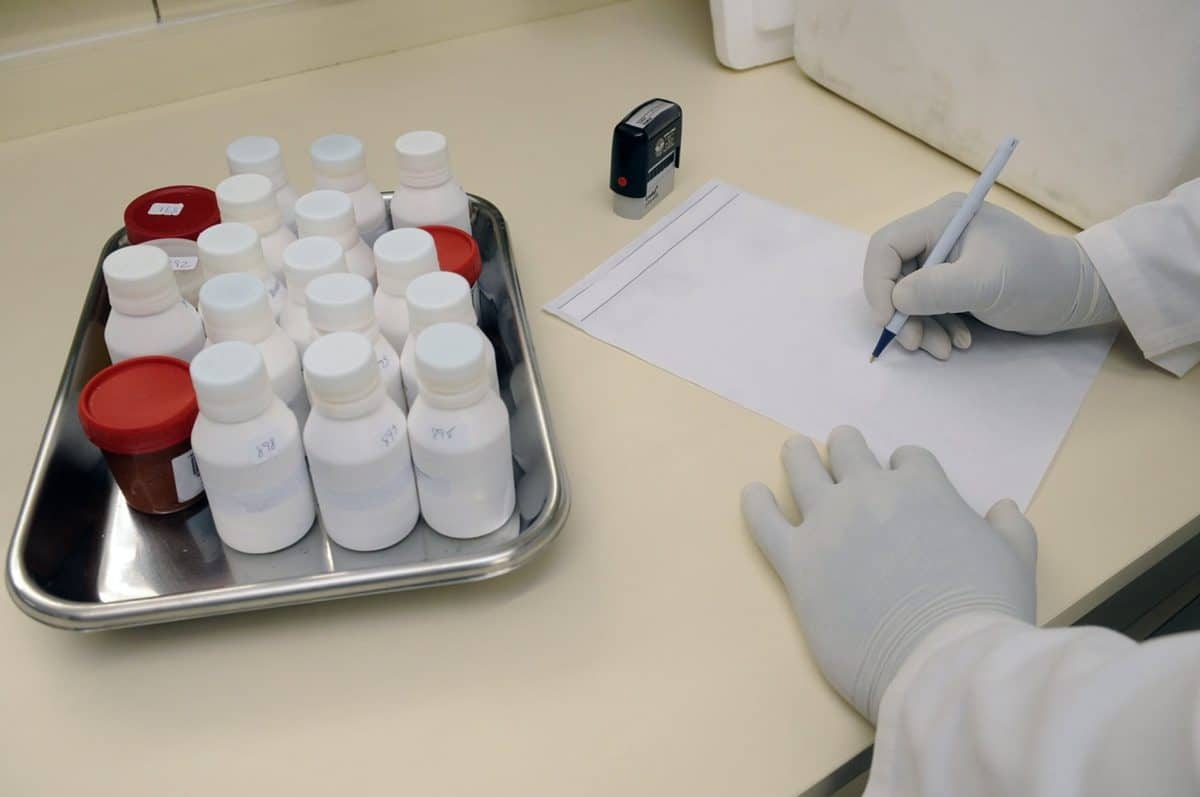If you want to gain a better understanding of all living things, from plants to animals, it’s essential to learn about biomes and the role they play in Biology. Learn how to read a biome map and define each type of biome in the world.
Biome Map: Definition, Examples, And Practice
Biomes are an interesting and important part of Biology, and without understanding what a biome is and how it works, you don’t have a full understanding of Biology. Let’s take an in-depth look at biomes, so you can take a look at a biome map and understand it; learning about biomes can also better prepare you for if you’re ever tested on a map of biomes.
What Is A Biome?
While you might have learned a little about biomes when you were in elementary school, there’s a good chance that you don’t have a biome map memorized or know about all of the biomes. As we all know, the entire surface of the planet has some lifeform, but it varies depending on factors like vegetation, climate, water, and light. A biome is classified by the flora and fauna (dominant plants and animal life) that resides in that particular area; the plants and animals that live in a biome are also known as biota. While some biomes share some characteristics, each type is unique, and the smaller units in a biome are what we know best as a habitat.Biomes are often mistakenly referred to as ecosystems (and vice versa). An ecosystem is made up of living organisms and the relationship that they have in their nonliving environment. There are many examples of ecosystems but think about a dark cave in a secluded part of the world and all of the known (and unknown) living things that live in the cave.One of the reasons why ecosystems may be easily confused with biomes is that a biome may have many different ecosystems.
Exploring The Different Types Of Biomes
If you look at a biome map, you will notice that it is color-coded with a key that refers to different types of biomes. Depending on what map you look at and who is teaching you about biomes, you may only learn about five biomes, which include tundra, grassland, forest, desert, and aquatic; sometimes it’s six basic biomes be splitting the aquatic into marine and freshwater.As you might guess, these biomes are basic, have a broad definition, and may refer to many parts of the globe. In order to gain a better understanding of Biology as a whole, you may want to consider learning more about other biomes like the rainforest, temperate forest, chaparral, taiga, savanna, temperate grasslands, and freshwater or marine.Younger learners or individuals who just want some basic information on biomes may benefit from learning about the broad classifications, but taking the time to learn about other biomes (and their specialized classifications) can help understand the world as a whole.As you explore biomes, it’s not uncommon to see different biomes in the same area, and often there are no clear boundaries from one biome to the next. If you were to compare a map of biomes from thousands of years ago to today, you’d see a completely different map.Climate change plays a significant role in how biomes are defined and where they are located on a map. The major biomes typically correspond to the climatic zones, such as a tropical wet climate.
Tundra
 As you might already imagine, the tundra biome is located in the northernmost regions on a map of biomes. A tundra is flat, cold, but still has plant life during the short growing season. A variety of birds call the tundra their home during the summer and migrate in the winter. Smaller mammals thrive in their habitats under the snow.
As you might already imagine, the tundra biome is located in the northernmost regions on a map of biomes. A tundra is flat, cold, but still has plant life during the short growing season. A variety of birds call the tundra their home during the summer and migrate in the winter. Smaller mammals thrive in their habitats under the snow.
Grassland
 The grassland biome is often referred to as plains or prairie, due to the large areas of a variety of grasses. Grasslands typically receive minimal rain and are often at high risk for fires. Even though there is not a large variety of flora, the biome is home to large herding mammals. Grassland is found on every continent except for Antarctica.
The grassland biome is often referred to as plains or prairie, due to the large areas of a variety of grasses. Grasslands typically receive minimal rain and are often at high risk for fires. Even though there is not a large variety of flora, the biome is home to large herding mammals. Grassland is found on every continent except for Antarctica.
Forests
 The forest biome makes up about one-third of the Earth’s land area, and as you might imagine, there are more classifications to the forest biome than “just trees.” The tropical rainforest has two seasons, 12-hour days, and has little variation in the climate. You’re most likely to find tropical rainforest countries near the equator like South America, Southeast Asia, and Southern Africa.
The forest biome makes up about one-third of the Earth’s land area, and as you might imagine, there are more classifications to the forest biome than “just trees.” The tropical rainforest has two seasons, 12-hour days, and has little variation in the climate. You’re most likely to find tropical rainforest countries near the equator like South America, Southeast Asia, and Southern Africa. A temperate forest biome is most frequently found in eastern parts of North America, northeastern Asian, and western and central parts of Europe. Animals from small mammals (squirrels) to predators (black bears) call the biome their home. The boreal or taiga forest is similar to the temperate forest biome and is found in Siberia, Scandinavia, Alaska, and Canada. The taiga forest biome doesn’t have as long of growing seasons as the temperate forest, and the climate is cold and dry.
A temperate forest biome is most frequently found in eastern parts of North America, northeastern Asian, and western and central parts of Europe. Animals from small mammals (squirrels) to predators (black bears) call the biome their home. The boreal or taiga forest is similar to the temperate forest biome and is found in Siberia, Scandinavia, Alaska, and Canada. The taiga forest biome doesn’t have as long of growing seasons as the temperate forest, and the climate is cold and dry.
Deserts
 It’s not uncommon to see all types of desert biomes lumped into one broad desert biome and again, depending on the map you’re looking at or who is teaching information about biomes, the classifications may be different. Some people break down the desert biome even further to include hot and dry, semiarid, coastal and cold. If you live in the U.S., you may be most familiar with a hot and dry desert biome, as it includes four of the major deserts in North America. The seasons are very dry and warm year round.
It’s not uncommon to see all types of desert biomes lumped into one broad desert biome and again, depending on the map you’re looking at or who is teaching information about biomes, the classifications may be different. Some people break down the desert biome even further to include hot and dry, semiarid, coastal and cold. If you live in the U.S., you may be most familiar with a hot and dry desert biome, as it includes four of the major deserts in North America. The seasons are very dry and warm year round. Semiarid desert biomes may be found in parts of the U.S., but are also found in Newfoundland, Greenland, Europe, and parts of Asia. There are more flora and fauna in semiarid biomes than the hot and dry.The coastal desert biome sees moderate rainfall and the cold desert biome experiences heavy snowfall; both have plants and animals that have adapted to the environment (much like every other biome on the map)
Semiarid desert biomes may be found in parts of the U.S., but are also found in Newfoundland, Greenland, Europe, and parts of Asia. There are more flora and fauna in semiarid biomes than the hot and dry.The coastal desert biome sees moderate rainfall and the cold desert biome experiences heavy snowfall; both have plants and animals that have adapted to the environment (much like every other biome on the map)
Aquatic
 When exploring a map of biomes, it’s important not to overlook the aquatic biome. While many people pay close attention to flora and fauna throughout the various biomes “on land,” there’s plenty to consider when we look at the bodies of water.The aquatic biome is typically divided into freshwater and saltwater (or marine) biomes. From there it might be broken down even more to ponds or lakes, rivers, oceans, and estuaries.
When exploring a map of biomes, it’s important not to overlook the aquatic biome. While many people pay close attention to flora and fauna throughout the various biomes “on land,” there’s plenty to consider when we look at the bodies of water.The aquatic biome is typically divided into freshwater and saltwater (or marine) biomes. From there it might be broken down even more to ponds or lakes, rivers, oceans, and estuaries. It’s essential to think about aquatic biomes because just like other biomes, climate change and other environmental factors affect these “off land” biomes, which over time will change the layout of a map of biomes.
It’s essential to think about aquatic biomes because just like other biomes, climate change and other environmental factors affect these “off land” biomes, which over time will change the layout of a map of biomes.
Why Are Biome Maps Important?
 Image Source: askabiologist.asu.eduNow that you have a better understanding of the different biomes and how one map could be different from another, you might be wondering why biome maps are so important. As we mentioned earlier, learning about biomes and understanding where they are in the world can help us understand all living organisms. Biome maps can help people learn about places they may never get to see; the map may open their eyes to a new species of animal or a unique variety of flora. Biome maps may be a basic resource for understanding Biology, but without the maps, we know very little about Biology, it’s past, and what might be in store for the future of our planet.Even though we may not see drastic changes to our environment in our lifetime, we can see small scales changes such as more prairie fires or decreasing populations of a specific bird.To some, these may not seem like that big of a deal when comparing it to the world at large, but it can give us some idea as to how biome maps will continue to evolve.
Image Source: askabiologist.asu.eduNow that you have a better understanding of the different biomes and how one map could be different from another, you might be wondering why biome maps are so important. As we mentioned earlier, learning about biomes and understanding where they are in the world can help us understand all living organisms. Biome maps can help people learn about places they may never get to see; the map may open their eyes to a new species of animal or a unique variety of flora. Biome maps may be a basic resource for understanding Biology, but without the maps, we know very little about Biology, it’s past, and what might be in store for the future of our planet.Even though we may not see drastic changes to our environment in our lifetime, we can see small scales changes such as more prairie fires or decreasing populations of a specific bird.To some, these may not seem like that big of a deal when comparing it to the world at large, but it can give us some idea as to how biome maps will continue to evolve.
Making The Most Of A Biome Map
Not only are biome maps an important resource to use in a Biology course, but it can be used in a variety of fields such as Agriculture. The United States Department of Agriculture can utilize the map to learn more about soil distribution while conservation programs can strive to protect biomes that need it the most.
If your goal is to learn how to draw a map of biomes or memorize it for a class, you might want to consider the following tips.









